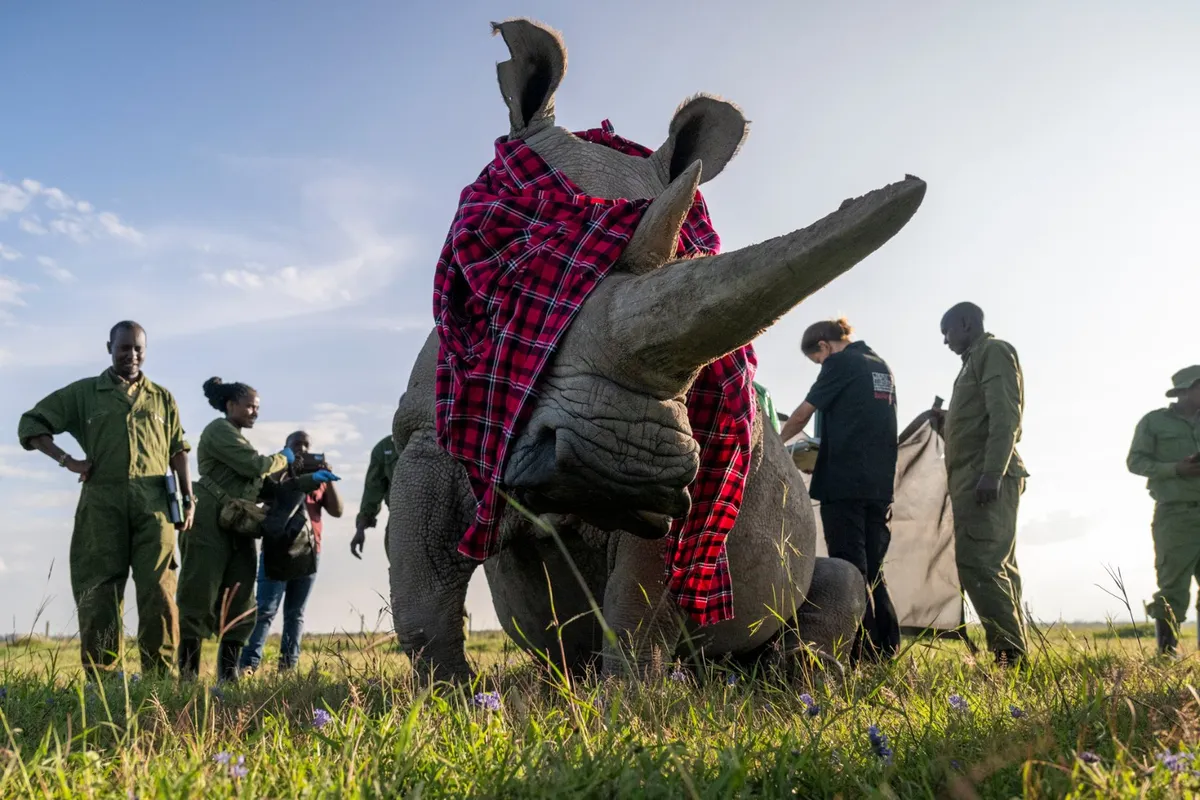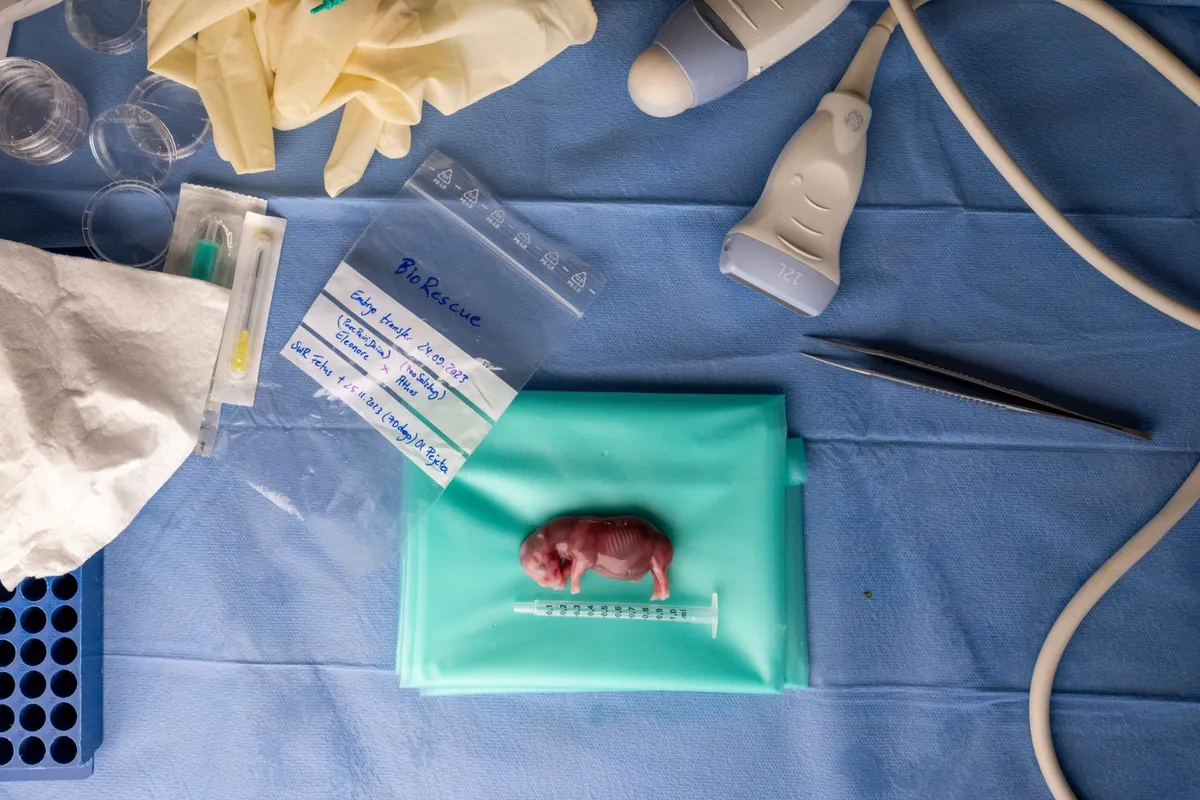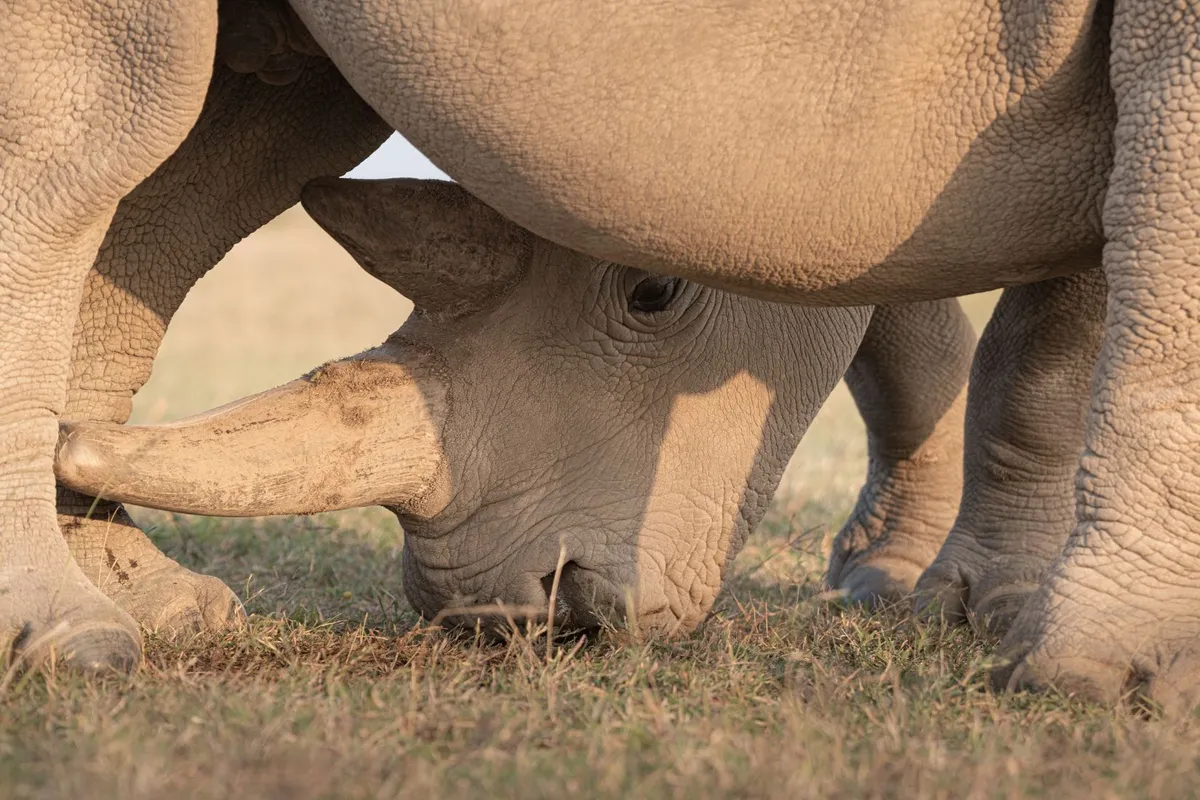The fate of the northern white rhino hangs in the balance. There are only two of this subspecies left alive: Najin and Fatu – mother and daughter, and neither able to bear a pregnancy.
The two rhinos were both once zoo animals, and are now kept at Ol Pejeta Conservancy in Kenya under constant protection.
Sudan, the last male northern white rhino, died in March 2018 aged 45. He was also a resident of Ol Pejeta, and the father of Najin.
However, some conservationists still believe there is hope for recovering the subspecies, and a dedicated team at BioRescue, a project led by Leibniz Institute for Zoo and Wildlife Research, think they have the answer. They've been developing in-vitro fertilisation (IVF) techniques in southern white rhinos.

The breakthrough: IVF in action
A recent breakthrough is being heralded as the key for the next stage in the project. Two embryos were created from captive southern white rhinos (a female in Belgium and a male in Austria) and then transferred into a surrogate (in Kenya), followed by the successful implantation of one of them.
“Together with the team and many professional partners, I developed the devices that can actually find and access the required location where to insert the tiny embryo into a two-tonne animal,” says Thomas Hildebrant, BioRescue project head.
“It took many years to get it right and we are overwhelmed that we now have proof that this technique works perfectly.”

Mixed success for first IVF rhino pregnancy
Unfortunately, the surrogate mother died around 70 days into the pregnancy, due to infection from Clostridium – a bacteria naturally found in the soil which can be deadly to animals. A male rhino also died from the infection.
“It is bitter that this milestone is confirmed under such tragic circumstances with the death of the surrogate Curra and her unborn calf,” adds Hildebrant, “but I am certain that this proof of concept is a turn of the tide for the survival of the northern white rhino and the health of Central-African ecosystems.”

The next step
Despite the loss of the surrogate, and not having brought an IVF pregnancy to term, the team believe that they can move onto implanting a northern white rhino embryo into a southern white rhino surrogate.
It’s hoped that the first northern white rhino calf will be born whilst Fatu and Najin are still alive, so it can learn “social communication” and “how to behave from them”.
Thirty of these embryos are stored in liquid nitrogen in Germany and Italy. To increase genetic diversity for future breeding, scientists are hoping to create sperm and eggs from stem cells.
- Last male northern white rhino dies
- Remembering Rhinos: stunning photographs of the iconic rhino
- Rhino guide: how to identify, where to see and why they're endangered
Main image credit: Jon A. Juárez
